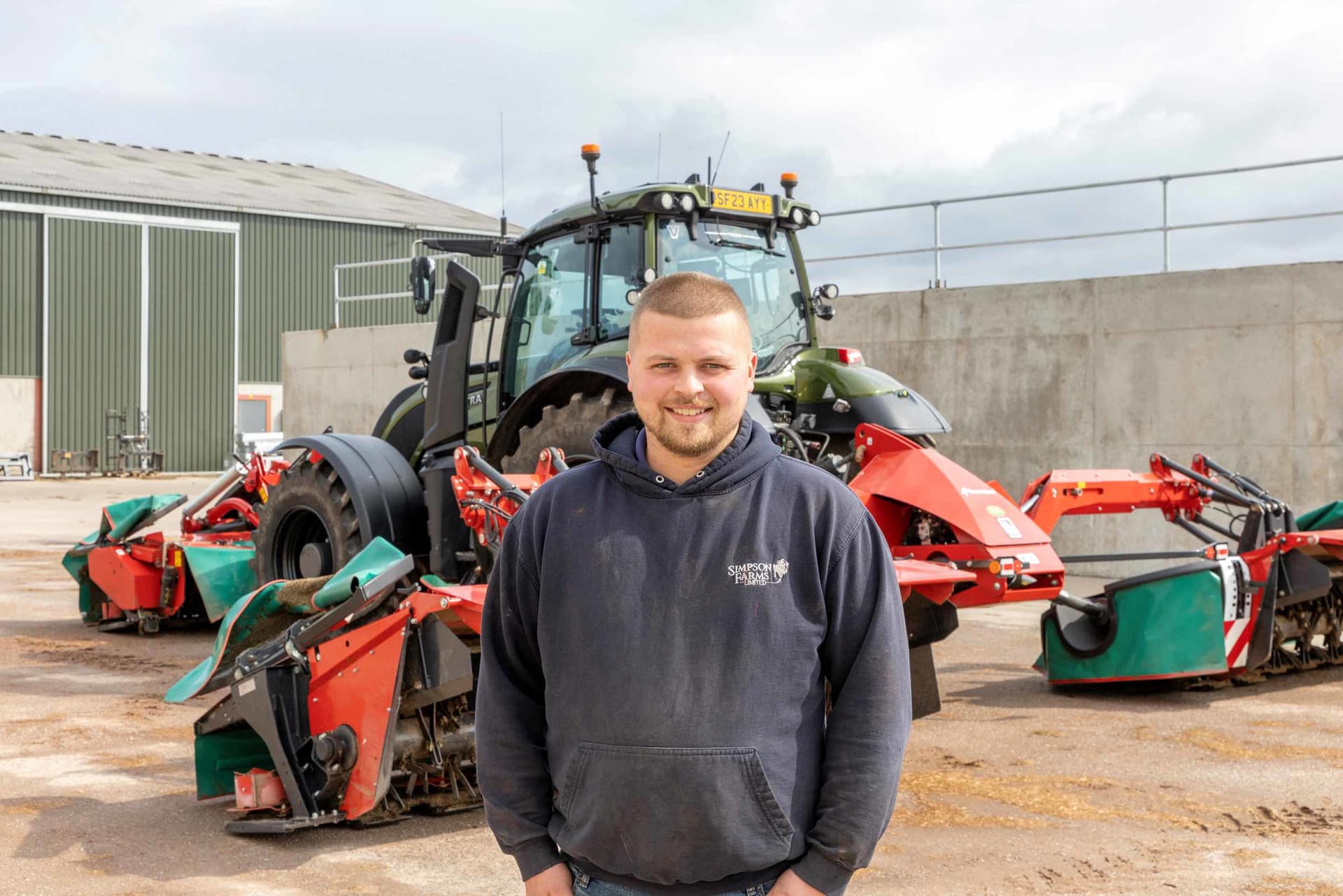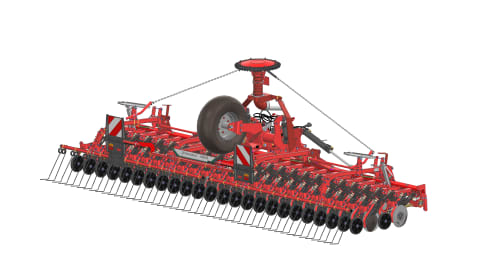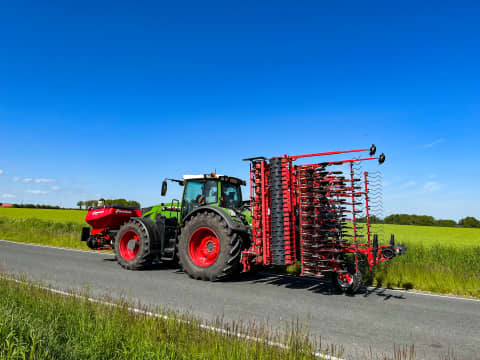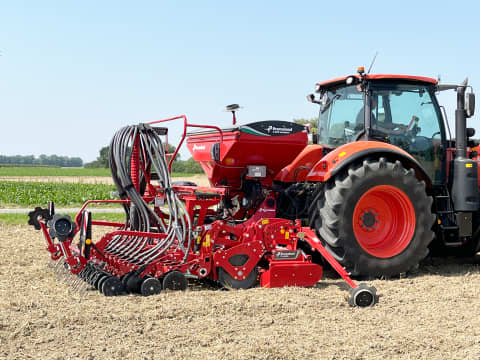But the ever-present risk of catchy weather in the county of Wigtownshire dictates that high-capacity kit is the order of the day for the Simpson family and its team.
“Our coastal location means we’re under constant pressure from the weather,” explains head of field operations Kieran Wright. “Weather windows can be tight, so we need capacity from our equipment, to make sure our silage is the best it can be.”
That ethos saw the farm replace one of its two front/rear 6m mower outfits with a Kverneland 53100MT triple mower for the 2025 season, taking the total cutting bed width up to an impressive 15.5m.
“We had a demonstration of several triples, and the Kverneland set was by far the easiest to drive – both from an operator point of view and with power consumption. These mowers just slid over the surface and didn’t drag.”
“First cut this year saw 750 acres of grass dropped in just two and a half days, which is impressive,” says Kieran. “Having a 9.5m triple and a 6m double has made it easier to drop a lot of grass very quickly, so we can match the speed of the forager to ensure a consistent wilt time, and make the most of tight weather windows to hit our dry matter target.”
A local contractor provides the forager fire-power. Aiming to clear 320 acres/day means the Simpson Farms team needs to make sure enough grass is mown and tedded, ready for the contractor to row-up and chop.
Supplied by J&S Montgomery, the 53100MT butterfly boasts a working width from 9.5-10.2m thanks to a pair of nine-disc rear beds that are used in combination with an eight-disc, 3.2m wide 3332FT front-mounted mower conditioner.
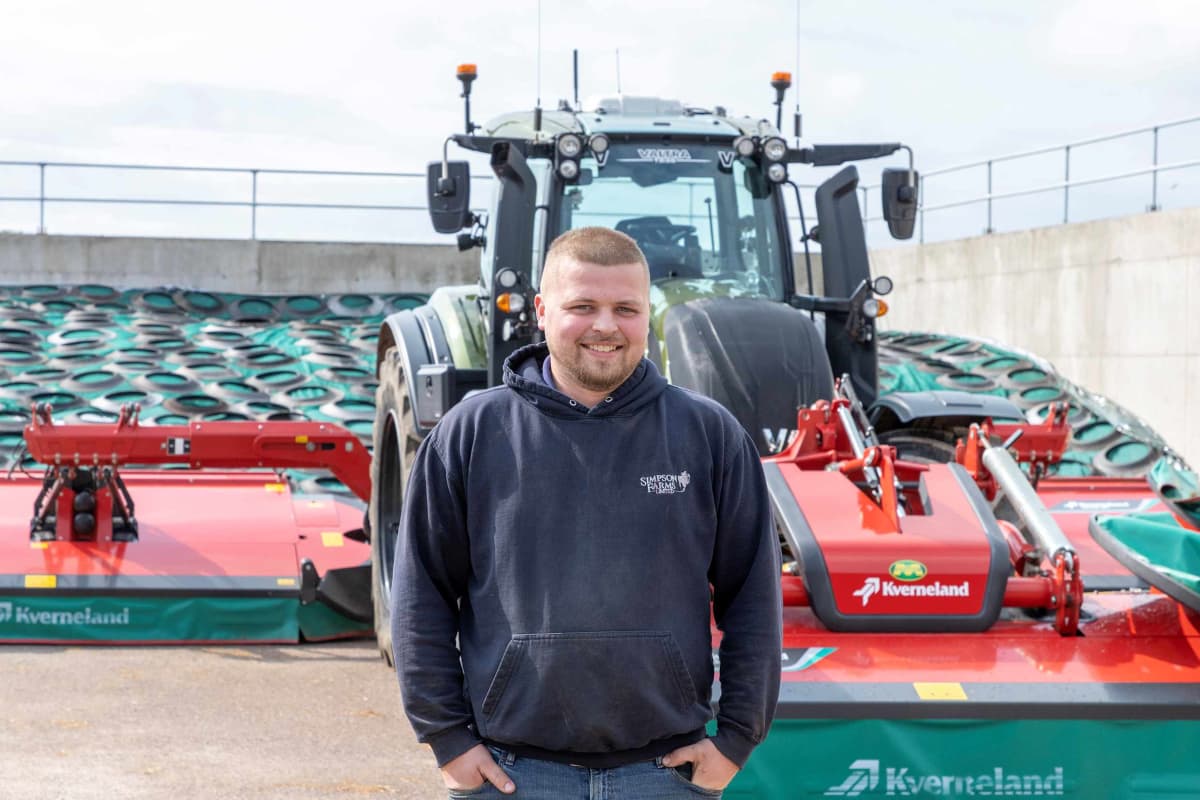
Kieran currently runs the set on a Valtra T235, though tractor power is expected to get a boost to make the most of the new mowers. Simpson Farms is about to put a more powerful Valtra Q265 on the triple mower and then use the T235 for its 6m combination, replacing a four-cylinder N174 model that is currently in use.
Field sizes range from 15-52 acres, and few of them are flat.
“Output is good, but on the steeper banks, I can lose forward speed, particularly in a heavy crop,” he says. “It’s also why we operate at the narrowest working width, to make sure we have enough overlap when mowing across the banks.”
That mowing speed, depending on the crop, is from 12-16kph with the rear hoods fully open to spread the crop, with the semi-swinging steel conditioner tines easing the job for the tedder as the farm seeks 28-33% dry matter.
“We do have a lot of undulating fields, so having mowers that float and follow ground contours is also very important,” he says. “The front mower is amazing to watch as it oscillates and moves around, all the time hugging the ground.”
“And it’s much the same with the rear pair, thanks to the Quattro-Link suspension system.”
“With a bit more power, I should be able to comfortably hold speed going up the steeper banks,” he adds. “These are banks where you only chop one way when filling trailers, so having a butterfly mower has really improved tractor stability, making headland turns on those steeper banks so much safer and easier.”
With forage quality in mind, he says the farm leaves a generous 50mm stubble height to encourage rapid regrowth, with fertiliser and slurry applied as soon as the forage leaves the field.
It also keeps blades and tines away from the ground, reducing the risk of soil contamination.
“We have put higher skids under all three beds, lifting the mowers by 40mm,” he says. “It all adds to the high-quality forage we need for the cows.”

